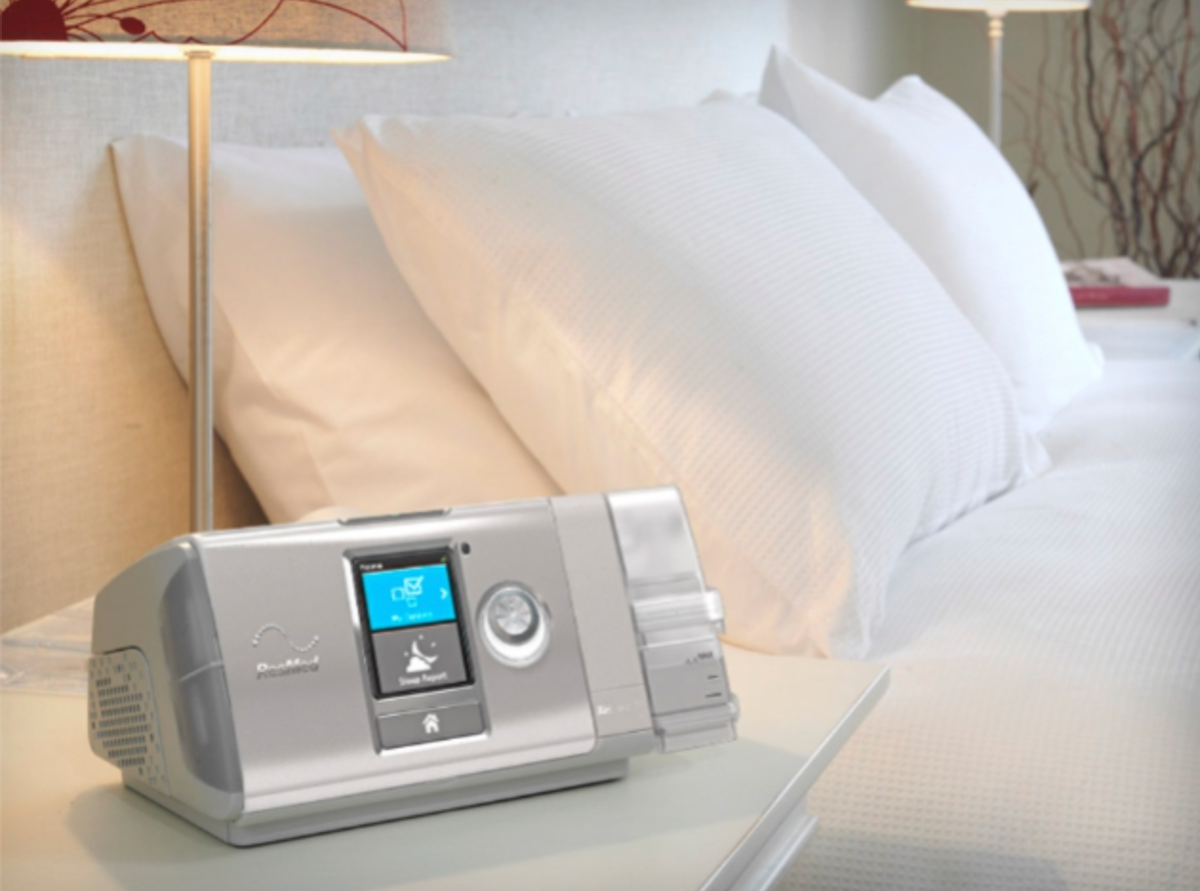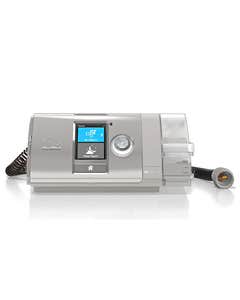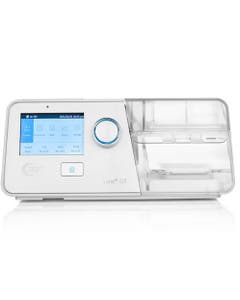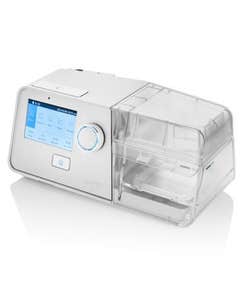Everything to Know About BiPAP Therapy
This post was originally posted on November 23, 2021, and updated on July 25, 2022.
What is BiPAP Therapy?
BiPAP (aka BPAP) therapy is the preferred choice for treating central sleep apnea, cases of severe obstructive sleep apnea, or mixed sleep apnea. In these instances, CPAP therapy may not be enough to get users the extra air they need. That’s where a BiPAP machine becomes an alternative treatment. BiPAP therapy is a great treatment for users who have other medical conditions that make it hard to breathe, like asthma, congestive heart failure, obesity, and more.
What is a BiPAP Machine?
A BiPAP machine is very similar to a CPAP machine. However, a BiPAP delivers a higher pressure when a user breathes in. Another main difference is that rather than one continuous air pressure, a BiPAP machine delivers two alternating air pressures based on the breathing pattern of the patient.
How Does a BiPAP Machine Work?
A BiPAP uses higher inspiratory positive airway pressure when breathing in and lower expiratory positive airway pressure when breathing out. By using the tube attached to the machine, the device connects to a user's mask and pushes air through the tube and mask to provide the extra oxygen a user needs during the night.
Other settings can also control the timing, length, and volume of the breathed air. With two alternating air pressures, a person with more complex sleep apnea is able to sleep and breathe more comfortably.
What is a BiPAP Machine Used For?
Central sleep apnea and more severe cases of obstructive sleep apnea may require more than simple CPAP therapy to achieve compliance. BiPAP is the option most doctors recommend when CPAP therapy does not appear to work, or if the patient has difficulty comfortably sleeping with CPAP.
What is The Difference Between BiPAP And CPAP?
CPAP machines deliver a singular flow of pressurized air to maintain an open airway while you sleep. While the air pressure is adjustable, the CPAP machine is delivering only one flow of air. CPAP manages most mild to moderate cases of sleep apnea.
BiPAP machines deliver two separate levels of air pressure: one for inhalation and one for exhalation. These two adjustable pressure settings provide a more regulated control of airflow for patients, who are usually suffering from more severe sleep apnea.
Often patients will begin with CPAP only to realize that they still experience frequent apneas, even while staying compliant. A doctor may recommend BiPAP therapy when CPAP is not proving effective.
Which is the Best BiPAP/BPAP Machine?
The best BiPAP machines come with many of the same features CPAP machines have that users love. BiPAP machines can include built-in humidifiers which help to minimize the side effects of PAP therapy. Some machines can collect sleep data that can be later shared with your doctor. Flexible options when it comes to personal adjustment are one of the key features among users who want to customize their BiPAP experience.
Preparation for BiPAP Therapy
You should be familiar with the parts of your BiPAP machine. They include:
- A face mask, nasal mask, or nasal plugs
- The machine’s motor, which blows air into a tube
- The tubing that connects the machine’s motor to the mask or plugs
Your BiPAP machine might also have other features, such as a heated humidifier.
If you are buying a BiPAP machine for home use, you may want to talk with a professional who sells home medical equipment. The CPAP Shop can help you pick the type of BiPAP machine best suited to your needs. Our experts can also give you instructions about how and when to clean the masks, tubing, and other parts of the machine.
Who Is Ideal for BiPAP Therapy?
BiPAP may help you if you have a medical problem that impairs your breathing. For example, you might need BiPAP if you have any of the following:
- Chronic obstructive pulmonary disorder (COPD)
- Obstructive sleep apnea
- Obesity hypoventilation syndrome
- Pneumonia
- Asthma flare-up
- Poor breathing after an operation
- Neurological disease that disturbs breathing
BiPAP may not be a good option if your breathing is very poor. It may also not be right for you if you have reduced consciousness or problems swallowing. BiPAP may not help enough in these situations. Instead, you may need a ventilator with a mechanical tube that is inserted down your throat. Or you may benefit from a tracheostomy—a procedure that creates an airway in your windpipe.
In some cases, people can move off such ventilator support to BiPAP as their breathing improves. People who do not want a breathing tube but want some assistance with breathing may also use BiPAP.
Benefits Of BiPAP Therapy
BiPAP can make a positive difference in life expectancy and has been found to significantly reduce the risk of death from certain conditions and diseases.
The use of BiPAP for COPD may reduce the number of COPD exacerbations and may decrease the need for invasive mechanical ventilation. BiPAP may also help reduce the effects of respiratory disease by allowing already weakened respiratory muscles to relax for some time at night.
BiPAP therapy has helped many CPAP users who have difficulty adjusting to standard CPAP still complete their sleep apnea treatments successfully without compromising comfort.
Limitations Of BiPAP Therapy
If you need emergency breathing support, a BiPAP may not be right for you. For example, you may need supplemental medical oxygen treatment instead of airway pressure.
In some situations, you may need intubation, in which a mechanical breathing tube is inserted into your throat to help you breathe. A tracheostomy—a procedure that creates an airway directly in your windpipe (trachea)—is a more long-term solution that sends air to your airways during the day and at night.
Are There Risks Associated with BiPAP Therapy?
There are some risks associated with BiPAP therapy. Be sure to follow the instructions and do not recalibrate the machine on your own or use it differently than recommended.
- Side effects associated with BiPAP use include:
- Slight skin irritation from wearing the face mask
- Dry mouth and/or dry nasal passages
- Stomach bloating from breathing in too much air
- Allergy to the mask's material, which can cause skin breakouts or respiratory issues
If the mask doesn't fit properly, air may leak. This can result in lower air pressure than you need, making the treatment less effective—or possibly not effective at all.
You should not use your BiPAP machine if you become medically unstable. The at-home device is not recommended if you have an acute infection or if you are at an increased risk of infection. If you begin to feel sick or if your breathing worsens, be sure to talk to your healthcare provider.
What Happens During BiPAP Therapy?
As you use your machine each day, you will power it, place the mask on your face, and make sure that you are feeling the air pressure. The face mask should be attached to the machine through a long plastic tubing. You should become familiar with the parts and be ready to reconnect tubing if it becomes detached.
Some BiPAP machines are battery-operated, while others are meant to be plugged in. If you have a battery-powered machine or a battery backup, you will need to monitor the battery's life and replace it if needed. You also need to periodically change the water if your BiPAP machine comes with a humidifier.
Your device may also include software that allows some data to be sent to your medical team so they can see readings such as your breathing rate, oxygen level, and heart rate. These values can help determine whether you need any change in your air pressure settings.
Misconceptions Regarding BiPAP And VPAP
When CPAP therapy doesn’t seem to be working, medical practitioners will often recommend that the patient switch to a BiPAP or VPAP device. While the acronyms are different, they actually refer to the same type of treatment.
BiPAP stands for bi-level positive airway pressure, while VPAP stands for variable positive airway pressure. Though the term BiPAP is more commonly used, some device manufacturers prefer the term VPAP. Regardless of how the device is branded, however, the core idea is that the machine can deliver two notably different pressures based on whether the patient is inhaling or exhaling.
How Is BiPAP Therapy Beneficial for Sleep Apnea Treatment?
BiPAP therapy offers some benefits that CPAP machines cannot provide. That includes:
- Spontaneous switching automatically senses the user’s breathing pattern and switches between the two pressure levels when they naturally inhale and exhale. The majority of BiPAP users rely on this setting, and it is standard for BiPAP devices.
- Timed switching allows users to program how long each IPAP and EPAP phase should last. This ensures users take the correct number of breaths per minute and can function much like a ventilator.
- Spontaneous/timed switching is primarily spontaneous, following the user’s natural breathing patterns. On this setting, timed switching turns on when the machine senses that the user has dropped below a set number of breaths per minute.
BiPAP machines are especially helpful for new sleep apnea patients who struggle with the use of standard CPAP machines. They may find it difficult to adjust to the pressurized air. BiPAP offers alternative approach to therapy that can help.
How Is BiPAP Therapy Beneficial for COPD?
If you have COPD, your breathing is likely labored. Shortness of breath and wheezing are common symptoms of COPD, and these symptoms can worsen as the condition progresses.
BiPAP therapy targets these dysfunctional breathing patterns. By having a custom air pressure for when you inhale and a second custom air pressure when you exhale, the machine is able to provide relief to your overworked lungs and chest wall muscles.
This therapy was originally used to treat sleep apnea and for good reason. When you’re sleeping, your body relies on your central nervous system to lead the breathing process. If you’re resting in a reclined position, you experience more resistance when breathing.
Depending on your individual needs, BiPAP therapy can take place when you’re awake or asleep. Daytime use can limit social interactions, among other things, but may be necessary in certain situations.
How Much Does a BiPAP/BPAP Machine Cost?
Added features can cost you more. So, it’s important to consider your budget when shopping for a BiPAP machine. Prices can range from $1,200 to over $3,000 depending on the extra features you need.
Where Can I Buy a BiPAP/BPAP Machine?
You can find BiPAP machines at most medical equipment stores. You can also shop online from the comfort of your own home with medical equipment retailers like The CPAP Shop. We offer BiPAP machines from leading manufacturers with competitive pricing. Our experienced staff is available to answer any questions on BiPAP machines or sleep apnea therapy. Call 866-414-9700.
The CPAP Shop is an authorized online retailer of all BiPAP/BPAP machines. The CPAP Shop does not recommend any BiPAP/BPAP machine exclusively. You can buy any of these BiPAP/BPAP Machines on our website. This article is based on the author’s choice from the data available on the internet/user manual of the products.
To learn more about BiPAP machines, watch this detailed video.








